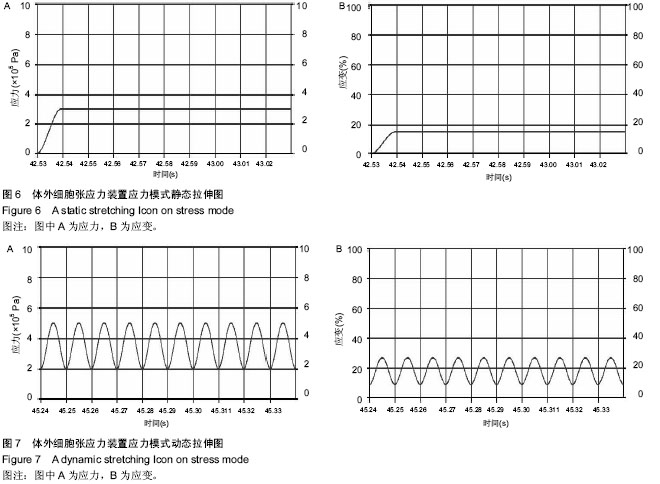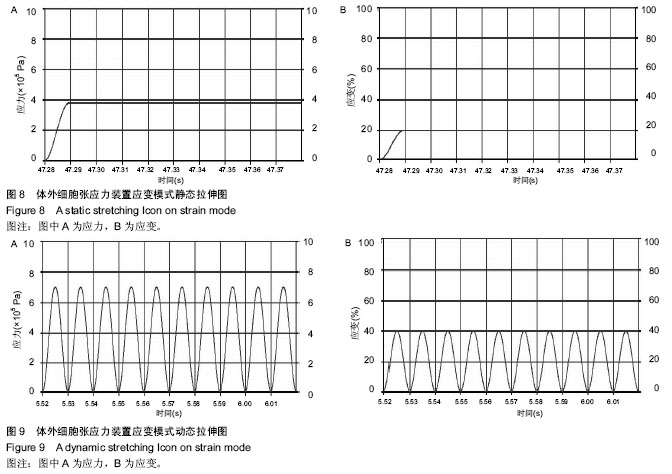| [1] 《2010年全球非传染性疾病现状报告》,2011年,日内瓦,世界卫生组织.
[2] Mathers CD,Loncar D.Projections of global mortality and burden of disease from 2002 to 2030.PLoS Med.2006;3(11):e442.
[3] Ingber DE. Cellular mechanotransduction: putting all the pieces together again. FASEB J.2006;20:811-27.
[4] Goncharova EA,Ammit AJ,Irani C,et al.PI3K is required for proliferation and migration of human pulmonary vascular smooth muscle cells.Am J Physiol Lung Cell Mol Physiol. 2002;283: L354-L363.
[5] Wu F,Matsuoka Y,Mattson MP,et al.The clathrin assembly protein AP 180 regulates the generation of amyloidbeta peptide.Biochem Biophys Res Commun.2009;385(2): 247-250.
[6] Moore MM,Goldman J,Patel AR,et al.Role of tensile stress and strain in the induction of cell death in experimental vein grafts.J Biomech.2001;34(3):289-297.
[7] Reneman RS,Arts T,Hoeks AP.Wall shear stress-an important determinant of endothelial cell function and structure in thearterial system in vivo.discrepancies with theory.J Vas Res.2006;43:251-269.
[8] Cunningham KS,Gotlieb AI.The role of shear stress in the pathogenesis of atherosclerosis.Lab Inves.2005;85:9-23.
[9] Duan C,Bauchat JR,Hsieh T.Phosphatidy Iinositol 3-kinase is required for insulin-1ike growth factor-1-induced vascular smooth muscle cell proliferation and migration.Circ Res.2000;86:15-23.
[10] 何辉.细胞力学试验方法研究:压力加载及改进的膜式张应变加载[D].四川大学,2004.
[11] Imsirovic J,Derricks K,Buczek-Thomas JA,et al.A novel device to stretch multiple tissue samples with variable patterns. Biomatter.2013;3(3):e24650-1-e24650-7.
[12] 仲维广,胥春,米红林,等.细胞应变装置中硅橡胶膜的应力分析[J].医用生物力学,2007,22(2):121-126.
[13] 马信龙,李爽,付鑫,等.硅橡胶膜细胞载体的应力分析及生物相容性[J].医用生物力学,2011,26(5):426-431.
[14] Yung Y,Vandenburgh H,Mooney DJ.Cellular strain assessment tool (CSAT): Precision-controlled cyclic uniaxial tensile loading.J Biomech.2009;42:178-182.
[15] 黎润光,邵景范,鲜麟波,等.体外细胞机械牵张力学装置的研制及力学分布的有限元分析[J].中国矫形外科杂志,2006,14(21): 1647-1650.
[16] 胥春,范震,郝轶,等.一种新型机械应变细胞加载装置的研制[J].医用生物力学,2011,26(6):534-539.
[17] Jenna L.Balestrini,Jeremy K. Skorinko,Adriana Hera, et al.Applying controlled non-uniform deformation for in vitro studies of cell mechanobiology.Biomech Model Mechanobiol. 2010;9:329-344.
[18] 柳兆荣,腾忠照,覃开荣.脉动流条件下血管壁的应力分布[J].力学季刊,2002,34(5):696-704.
[19] 陈泳.脉动流条件下血管壁的应力分布[D].复旦大学,2002.
[20] Qin KR,Xu Z,Wu H,et al.Synergy of wall shear stress and circumferential stress in straight arteries.J Hydrodynamics SerB.2005;17(6):752-757.
[21] 朱立新,许小亮,耿小平,等.血管的周向应力计算及其应用[J],医用生物力学,2004,19(3):160-165.
[22] Holzapfel GA,Sommer G,Regiting P.Anisotropic mechanical properties of tissue components in human atherosclerotic plaques.J Biomech Eng.2004;126:657-665.
[23] 朱大年,吴博威,樊小力.生理学[M].7版.北京:人民卫生出版社, 2008.
[24] 陈效.单轴拉伸装置中硅胶膜的应力分析及静态拉伸对ECV-304细胞形态的影响[D].重庆大学,2008. |


.jpg)